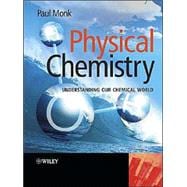
What is included with this book?
Paul M. S. Monk received his PhD in the electrochemistry of novel electrochromic viologen species at Exeter University in 1989. A postdoctoral research fellow position - 1989-91 - at the University of Aberdeen, in Scotland, was followed by lecturing positions in Physical Chemistry at Manchester Polytechnic - 1991-2 - then Manchester Metropolitan University - 1992-2007 -. He is currently employed as a Vicar in an inner-city parish in Oldham, Greater Manchester, UK.
|
|||
|
|||
|
|||
|
|||
|
|||
|
|||
|
|||
|
|||
|
|||
|
|||
|
|||
|
|||
|
|||
|
|||
|
|||
|
|||
|
|||
|
|||
|
|||
|
|||
|
|||
|
|||
|
|||
|
|||
|
|||
|
|||
|
|||
|
|||
|
|||
|
|||
|
|||
|
|||
|
|||
|
|||
|
|||
|
|||
|
|||
|
|||
|
|||
|
|||
|
|||
|
|||
|
|||
|
|||
|
|||
|
|||
|
|||
|
|||
|
|||
|
|||
|
|||
|
|||
|
|||
|
|||
|
|||
|
|||
|
|||
|
|||
|
|||
|
The New copy of this book will include any supplemental materials advertised. Please check the title of the book to determine if it should include any access cards, study guides, lab manuals, CDs, etc.
The Used, Rental and eBook copies of this book are not guaranteed to include any supplemental materials. Typically, only the book itself is included. This is true even if the title states it includes any access cards, study guides, lab manuals, CDs, etc.